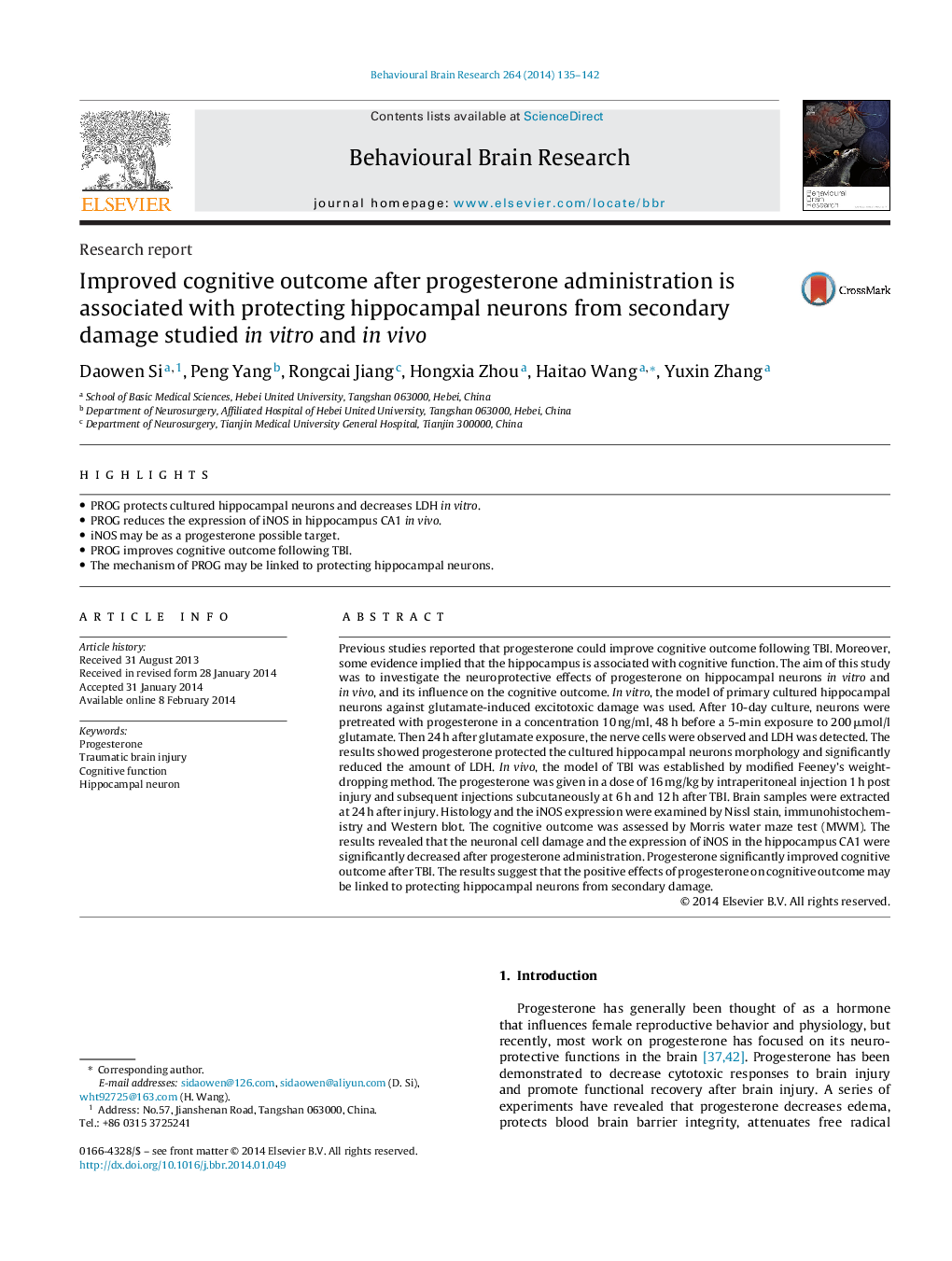| Article ID | Journal | Published Year | Pages | File Type |
|---|---|---|---|---|
| 6258258 | Behavioural Brain Research | 2014 | 8 Pages |
â¢PROG protects cultured hippocampal neurons and decreases LDH in vitro.â¢PROG reduces the expression of iNOS in hippocampus CA1 in vivo.â¢iNOS may be as a progesterone possible target.â¢PROG improves cognitive outcome following TBI.â¢The mechanism of PROG may be linked to protecting hippocampal neurons.
Previous studies reported that progesterone could improve cognitive outcome following TBI. Moreover, some evidence implied that the hippocampus is associated with cognitive function. The aim of this study was to investigate the neuroprotective effects of progesterone on hippocampal neurons in vitro and in vivo, and its inï¬uence on the cognitive outcome. In vitro, the model of primary cultured hippocampal neurons against glutamate-induced excitotoxic damage was used. After 10-day culture, neurons were pretreated with progesterone in a concentration 10 ng/ml, 48 h before a 5-min exposure to 200 μmol/l glutamate. Then 24 h after glutamate exposure, the nerve cells were observed and LDH was detected. The results showed progesterone protected the cultured hippocampal neurons morphology and significantly reduced the amount of LDH. In vivo, the model of TBI was established by modified Feeney's weight-dropping method. The progesterone was given in a dose of 16 mg/kg by intraperitoneal injection 1 h post injury and subsequent injections subcutaneously at 6 h and 12 h after TBI. Brain samples were extracted at 24 h after injury. Histology and the iNOS expression were examined by Nissl stain, immunohistochemistry and Western blot. The cognitive outcome was assessed by Morris water maze test (MWM). The results revealed that the neuronal cell damage and the expression of iNOS in the hippocampus CA1 were significantly decreased after progesterone administration. Progesterone significantly improved cognitive outcome after TBI. The results suggest that the positive effects of progesterone on cognitive outcome may be linked to protecting hippocampal neurons from secondary damage.
